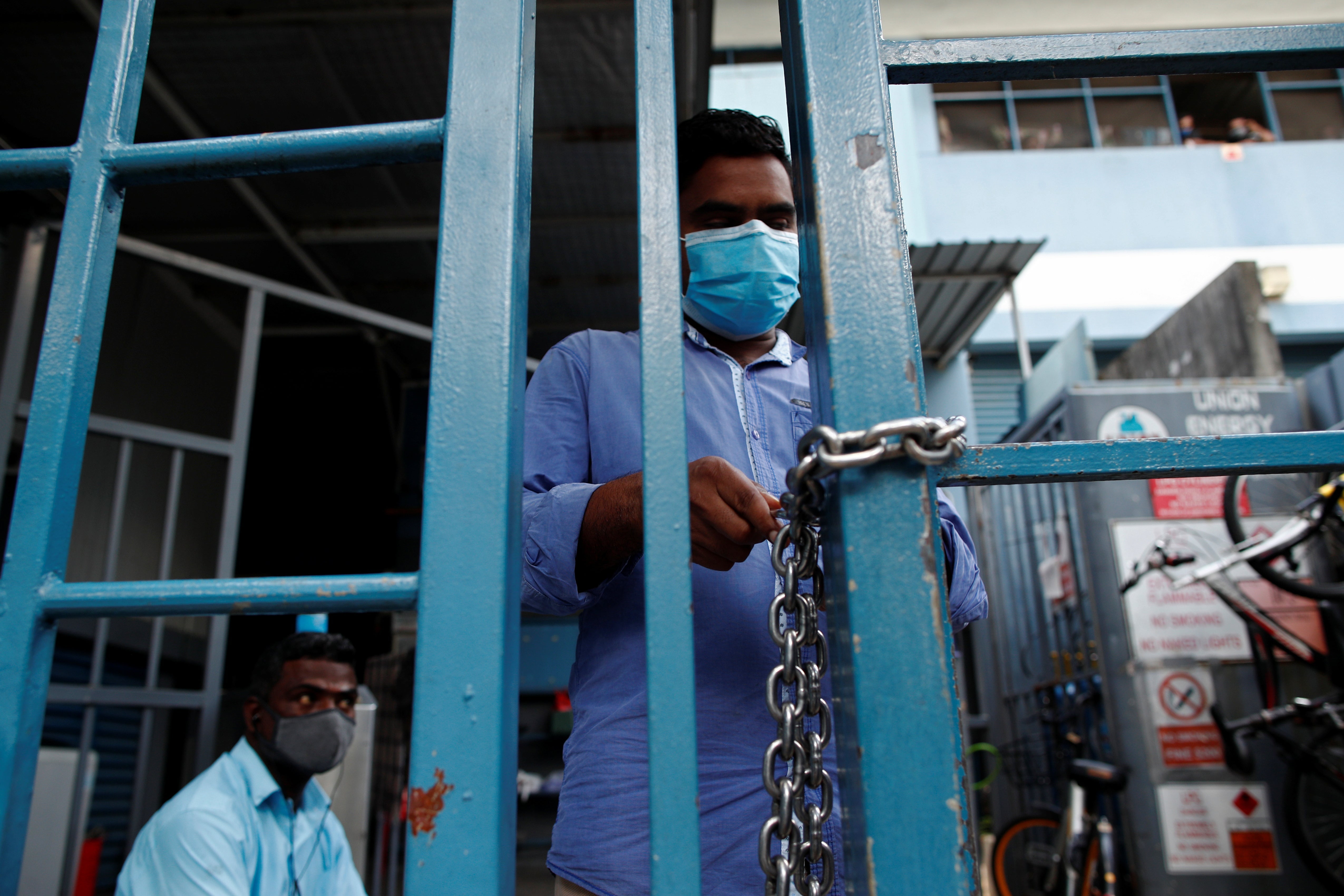Slate is making its coronavirus coverage free for all readers. Subscribe to support our journalism. Start your free trial.
Just last month, some East and Southeast Asian countries were held up as models for their coronavirus responses—especially Singapore and Taiwan, which had largely contained the outbreak despite close economic, geographic, and cultural ties to China, the pandemic’s original epicenter. Some have continued to fare well. Taiwan, with only 428 confirmed cases, has managed to avoid a lockdown. Even South Korea, despite an alarming rate of infection in early March, has flattened its curve. But Singapore now has the largest recorded outbreak in Southeast Asia. Between its first case on Jan. 23 and March 23, Singapore reported fewer than 510 known cases of COVID-19. Now, it has more than 11,000.
Despite Singapore’s early vigilance in addressing the pandemic—including extensive contact tracing—the government’s response had a blind spot. The key to what happened lies in how Singapore, a country of 5.8 million people, has treated its migrant workers.
Singapore relies on foreign labor to build and maintain its gleaming infrastructure. But about 300,000 of the country’s low-wage migrant workers, mostly from South Asia, live in dense dormitories on the outskirts of the island nation.* Rights groups and activists worried early on about the government’s negligence of the migrant population. In March, Transient Workers Count Too, or TWC2, a Singaporean nonprofit dedicated to improving conditions for migrant workers, warned of a potential cluster outbreak in the dorms, where it’s impossible to socially distance. Migrants often sleep 12 to 20 per room, in bunk beds, and they’re packed into the back of trucks on their commute to work each day. Some told the Guardian the shared bathrooms often don’t have soap or enough water for showers or toilets. The group also noted that employer policies often discourage workers from admitting they’re ill or seeking medical help. “The risk of a new cluster among this group remains undeniable,” TWC2 wrote.
Over the past few weeks, as COVID-19 has traveled through the dorms, Singapore has quickly lost control of its outbreak. (While the country was initially worried about a second wave from Singaporeans returning home from overseas, those cases have been largely controlled.) The Ministry of Health said that 982 of the 1,037 new COVID-19 cases on Thursday were migrant workers. About 80 percent of all cases in the country can now be traced to the dorms.
“This reflects the deliberate invisibilization of the foreign worker; the whole machinery of state operates as though they don’t exist,” Alex Au, vice president of TWC2, told the Washington Post.
Singapore has responded to the outbreak by introducing a partial lockdown in the country, which has shuttered most workplaces and staggered the days individuals can go to supermarkets, until at least June 1. The government has moved 7,000 workers, mostly in essential jobs, out of the dorms, the Guardian reported, but about 293,000 remain. Prime Minister Lee Hsien Loong wrote in a Facebook post last week that the government is building up its health care and isolation infrastructure to reduce the “chain of transmission” in migrant housing. On Tuesday, the government announced a quarantine for the dorms and said that it is setting up medical facilities and triage clinics there to ensure workers get adequate care. “It will take some time to show results, so we must expect to see more dorm cases for a while longer,” Lee wrote in the Facebook post.
Singapore’s outbreak serves as a cautionary tale for neglecting marginalized communities during a pandemic. It’s hard not to see parallels between Singapore’s migrant workers and the U.S.’s underclass of essential workers who labor without the necessary safety protections, or our undocumented farmworkers who are somehow considered both “essential” and “illegal” (and are even being detained on the job). Singapore’s preparedness for COVID-19 is something other countries have only aspired to: It’s implemented aggressive contact tracing and widespread testing and is home to a robust health care system and an efficient government that can enforce strict home quarantines. And yet it has shown us that, without looking after society’s more vulnerable members, those measures won’t be enough.
Update, April 27, 2020: This piece has been updated to clarify the number of low-wage manual-labor migrant workers, versus other migrant workers in the country.
